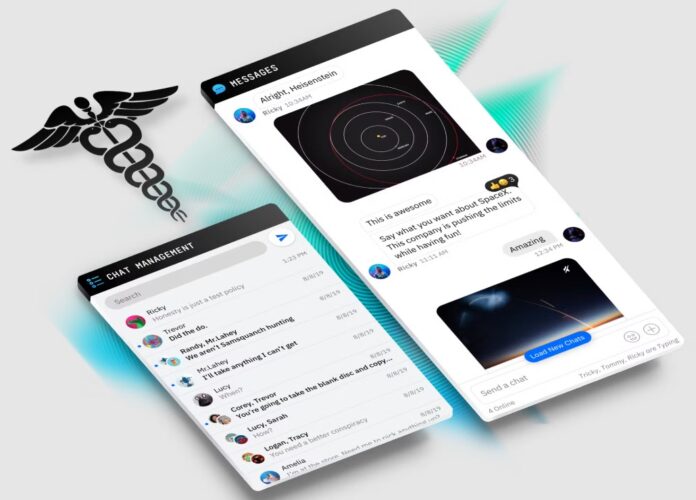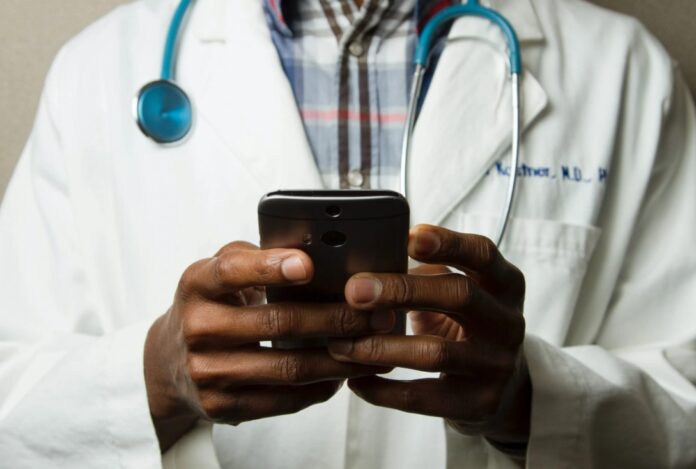
In the realm of healthcare, patient engagement stands as a paramount concern, with its impact resonating through various aspects of patient care and treatment adherence. The burgeoning adoption of HIPAA Secure Texting Apps is a testament to this shift towards enhanced and secure patient-provider communication pathways. These applications assure adherence to stringent healthcare privacy regulations, safeguarding sensitive patient information while offering a seamless and convenient platform for real-time communication, appointment management, and more.
The evolution does not stop here; these apps are significant for patient education, medication management, and coordinated care efforts, marking a holistic approach toward patient engagement and healthcare delivery. This post delves deep into the nuances of HIPAA Secure Texting Apps, outlining their key features, and benefits, and offering a comprehensive guide for their effective implementation within healthcare setups. Embarking on this journey, healthcare providers stand to revolutionize their patient engagement strategies, fostering improved healthcare outcomes, augmented patient satisfaction, and enhanced operational efficiency, all while assuring unparalleled data security and compliance with regulatory mandates.
Patient engagement has become a critical factor in delivering effective care. Engaged patients are more likely to adhere to treatment plans, have better health outcomes, and report higher satisfaction levels. One tool that has improved patient engagement is use of HIPAA secure texting apps. Secure texting has transformed the patient-provider relationship by enabling healthcare providers to communicate with patients securely and conveniently
Patients who feel heard and involved in their healthcare decisions are more satisfied with their care. Additionally, higher patient satisfaction scores can enhance the reputation of a healthcare facility. Patients who are more engaged also use healthcare resources more efficiently, reducing unnecessary tests and treatments. This can lead to cost savings for both patients and healthcare providers.
Driven by regulatory requirements, communication efficiencies, and patient preferences, secure texting adoption in healthcare has grown in recent years. Healthcare organizations are increasingly turning to HIPAA-secure texting apps to facilitate communication between providers, staff, and patients.
Key Features of HIPAA Secure Texting Apps

HIPAA Compliance
Secure texting platforms meet strict healthcare privacy regulations, such as HIPAA in the United States, through their design. They encrypt and protect patient information, reducing the risk of data breaches.
Convenience
Patients can communicate with their healthcare providers from their homes using secure texting apps on their smartphones or computers. This convenience eliminates the need for unnecessary office visits or phone calls.
Real-Time Communication
HIPAA secure texting apps enable real-time communication, allowing patients to reach out to their healthcare providers with questions or concerns. This immediate access to care can be precious in emergencies or for managing chronic conditions.
Appointment Reminders
You can use secure texting to send automated appointment reminders and confirmations. This reduces the likelihood of missed appointments, ensuring patients receive the care they need.
Patient Education
Healthcare providers can send educational materials, videos, and links to patients through secure texting. This empowers patients with information to make informed decisions about their health.
Medication Management
Using secure texting improves patient medication adherence by sending medication reminders and dosage instructions.
Care Coordination
Healthcare teams can use secure texting to collaborate and coordinate patient care. This ensures that all providers are on the same page and that patients receive comprehensive care.
Secure texting has emerged as a powerful tool for improving patient engagement in healthcare. HIPAA Secure texting apps have changed healthcare by allowing secure and convenient communication between patients and healthcare providers. Patients are more involved when they can get immediate information, customized care plans, and easily contact their healthcare providers.
Implementing secure texting within your healthcare organization can streamline communication and lead to better patient outcomes and satisfaction.
Best Practices for Implementing and Using HIPAA Secure Texting Apps with Patients

Choose a HIPAA-Compliant Secure Texting Platform
HIPAA enforces rules on keeping patient information private and secure in the US. When selecting a secure texting platform, ensure that it is HIPAA-compliant.
Educate Staff and Patients
Before implementing secure texting, you must provide comprehensive training for your healthcare staff and patients. Staff members should understand the platform’s features, security protocols, and how to use it effectively. Tell patients why secure texting is important, how they should use the app, and how the app keeps their information private.
Obtain Informed Consent
Patients must give informed consent before using HIPAA secure texting apps for healthcare communication. Clearly explain how the platform works, what type of information it will share, and how it will benefit their care. We should also inform patients about their rights regarding data privacy and security.
Develop Clear Policies and Procedures
Establish clear and comprehensive policies and procedures for secure texting within your healthcare organization. These guidelines should cover issues such as acceptable use, patient consent, data security, and emergency procedures. Ensure all staff members are familiar with these policies and adhere to them consistently.
Use Strong Passwords
Emphasize the importance of strong, unique passwords for secure texting accounts. Encourage users to avoid easily guessable passwords and to change them regularly. Consider implementing password policies that require a combination of uppercase and lowercase letters, numbers, and special characters.
Implement Encryption
Ensure that the secure texting platform you choose uses end-to-end encryption. This means the sender and recipient can only decipher scrambled messages. Encryption is a critical security feature for protecting patient data during transmission.
Enable Remote Wipe Capabilities
If you lose or have your mobile device stolen, it’s important to have remote wipe capabilities in place. This feature allows you to remotely erase all data on the device, preventing unauthorized access to sensitive patient information.
Maintain Message Logs
Keep detailed message logs for auditing and tracking purposes. This can be invaluable in case of disputes, ensuring accountability and demonstrating compliance with healthcare regulations. Be sure to retain these logs securely and in accordance with legal requirements.
Monitor Usage and Compliance
Consistently monitor the usage of secure texting within your organization. Ensure that staff and patients are adhering to established policies and procedures. Regular audits can help identify any potential issues or areas for improvement.
Encourage Secure Image and File Sharing
Secure texting should extend beyond text messages. Encourage secure image and file sharing for relevant medical documents, test results, and images. Only authorized users can access these encrypted files.
Respect Patient Preferences
Some patients may prefer traditional communication methods like phone calls or in-person visits. Respect their preferences and provide alternatives for those who are uncomfortable with or unable to use secure texting.
Stay Informed About Regulatory Changes
Stay informed about changes in healthcare regulations, especially regarding data privacy and security. Compliance requirements may evolve, and adapting your practices accordingly is crucial to avoid legal issues.
What To Look For When Researching HIPAA Secure Texting Apps

There are a number of use cases in healthcare that make every secure texting app a bit different from one another. However, there are a few basic features you should look for when doing your research:
Security
Developers build most HIPAA secure texting apps from the ground up with the sole purpose of delivering healthcare communication. Apps like Whatsapp are popular, but they don’t follow HIPAA rules. This could put your organization at risk of data breaches.
Look for apps that don’t save PHI in the cloud. These apps should use encryption with public/private keys. Additionally, they should support active directory or single sign-on.
Robust Messaging
The best HIPAA Secure Texting Apps offer various messaging features. These include group and broadcast messaging, the ability to share images, videos, and audio, as well as verification of message delivery.
Notifications
Messages are only useful if a patient knows to read them. The app you pick should have personalized notifications and reminders for unread messages, with different levels of importance for each message.
EMR Integration
A secure texting app for HIPAA should connect to your EMR. This connection links all messages with patients to their records.
Using secure texting with patients is a valuable addition to collaborative healthcare practices. By following these best practices, healthcare organizations can gain the benefits of secure texting while ensuring patients’ privacy and security. Organized secure texting improves communication, patient outcomes, and satisfaction, enhancing the quality of care in healthcare organizations.









